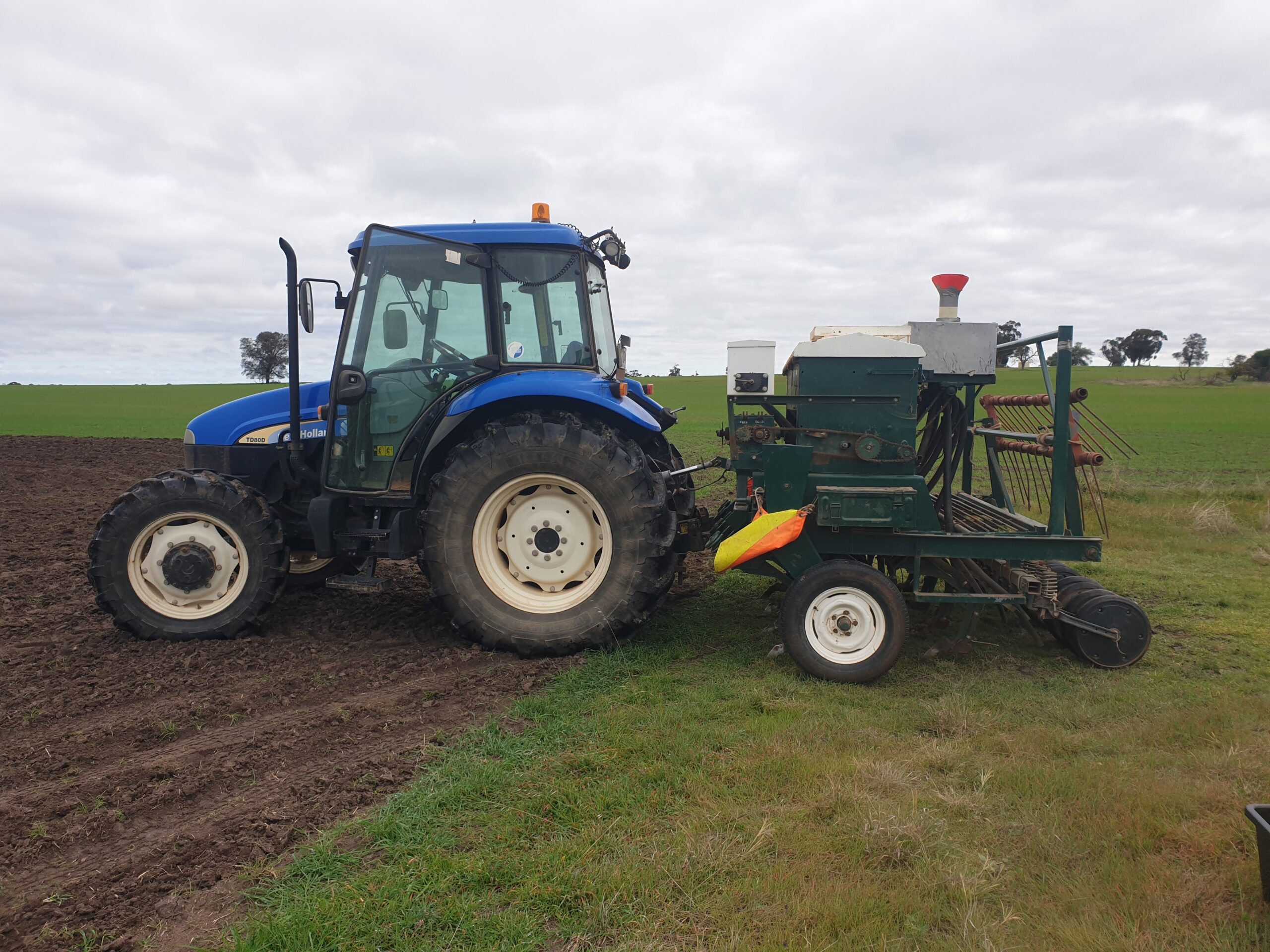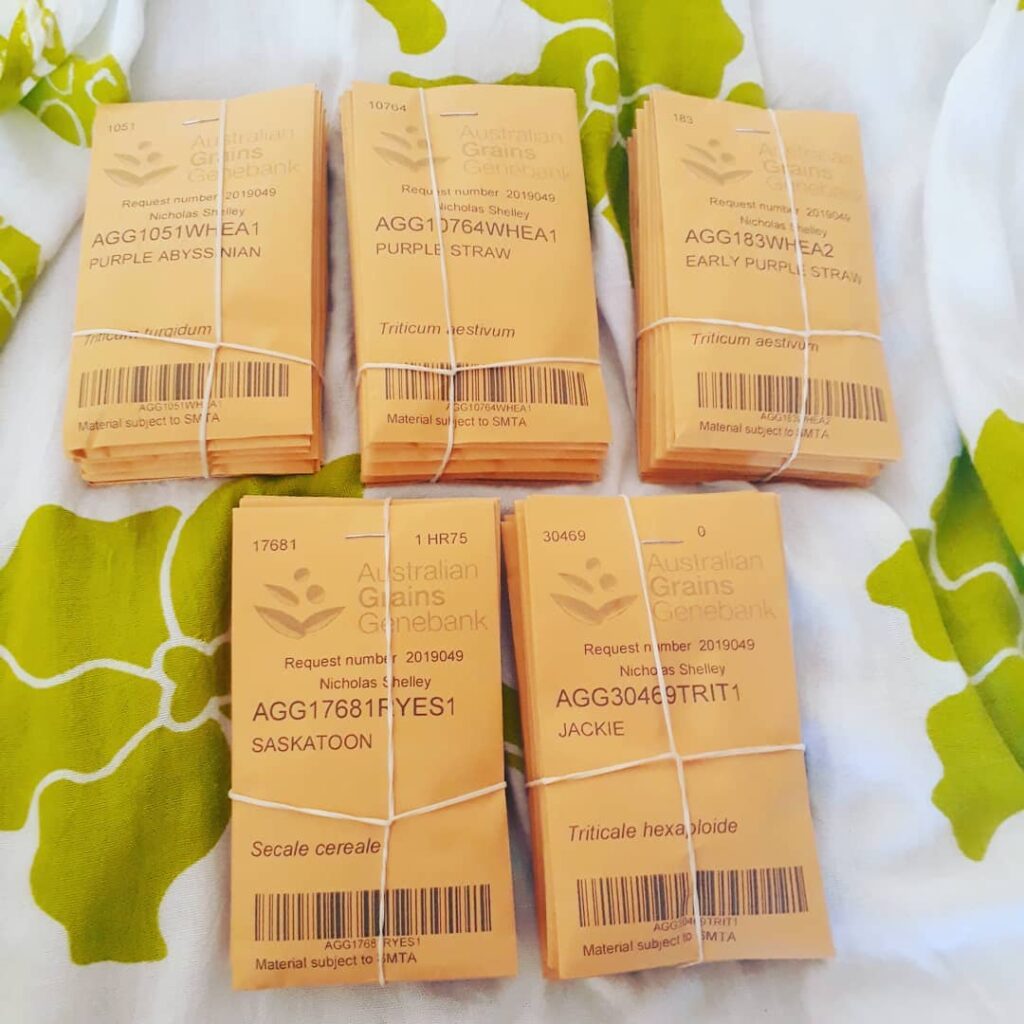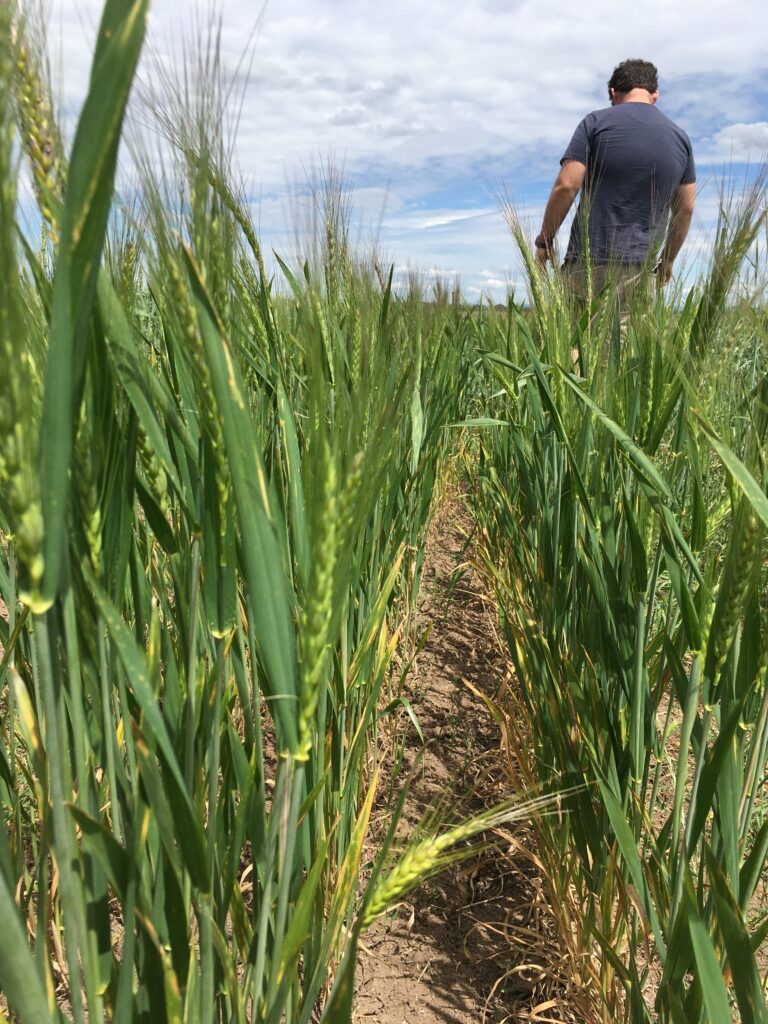This year the Yecora Red wheats and purple straw wheat amounts were large enough that Steve could use his own equipment and was able to plant out in different densities similar to how he plants his other grain crops, which would hopefully help to smother more weeds. We ended up with half an acre of the Yecora red wheat and an acre of the purple straw blends. For the other varieties with smaller amounts that made the cut, it could mean only one thing…the return of Stretch!
Jackie (and 6 month old baby baker) made their way out to the farm joined once again by Liesl and Lise to help (watch) with the planting. In no time at all the grains were in, prayers were said to the grain gods and a delicious meal of Tania’s famous soup accompanied by a side of Steve’s world class bread was had by all. Liesl returned the wheat, rye and spelt she bought from the same farmers by milling them in to flour and baking the most moist pistachio lemon cake. Really showcasing how good wholegrain flours are for even baked sweets and dispelling the myth that brown flour = dense.



Both Liesl and Lise (and Steve) are avid bakers and alongside Jackie and I will hopefully be helpful in giving an opinion on the baking qualities of the grains just planted. From a sourdough baker’s view what we’re looking for when trying new flours would be things such as how well it absorbs and retains water, if it tends to be more elastic or extensible or a good balance of both, does the dough remain strong during fermentation, shaping and proving, do the loaves tend to have good oven spring and volume, colour and texture of crust and crumb and of course does it have a distinct flavour. These factors will vary by the recipe and process used to make a loaf of bread and we tailor what we do according to how the flour feels whilst making the dough anyway but these findings are the differences in bread quality we’d be looking for.
How easily the grain is to mill will also make a difference for instance if the grain is too hard it will be difficult to make fine flour with certain types of mills and milling it hard may result in large amounts of starch damage not to mention the wear and tear on a stone mill. In any case making the same kind of loaf with the different grains should tell us a story. The conclusion may even be that this grain is better suited for a different kind of food altogether, maybe sourdough just isn’t it’s thing. At the end of it all though, it really is up to the farmers as if it doesn’t grow or yield well for their environment than there will be no grain to mill or bake anyhow. We are just grateful they allowed all of us to partake in the journey. And we’re hoping the blog encourages other bakers and farmers to team up and collaborate on a project too.
Back on the farm, the conversation after soup and cake then drifted through topics from the recent GraiNZ gathering, differences between commercial and biodynamic farming, price of grain, popularity of spelt and khorasan… Such a friendly yet productive lunch. Hopefully we have more soups and make more faces familiar.
Further reading:
From Washington State University Bread Lab, an article that talks about how industry has shaped conventional wheat breeding with a focus on fluffy white bread and doughs that are machinable. Perhaps we should move away from this all purpose flour to focusing on variety, whole wheat slow ferments, nutrition and flavour?
https://s3.wp.wsu.edu/uploads/sites/2616/2021/03/Breeding-away-from-all-purpose.pdf




